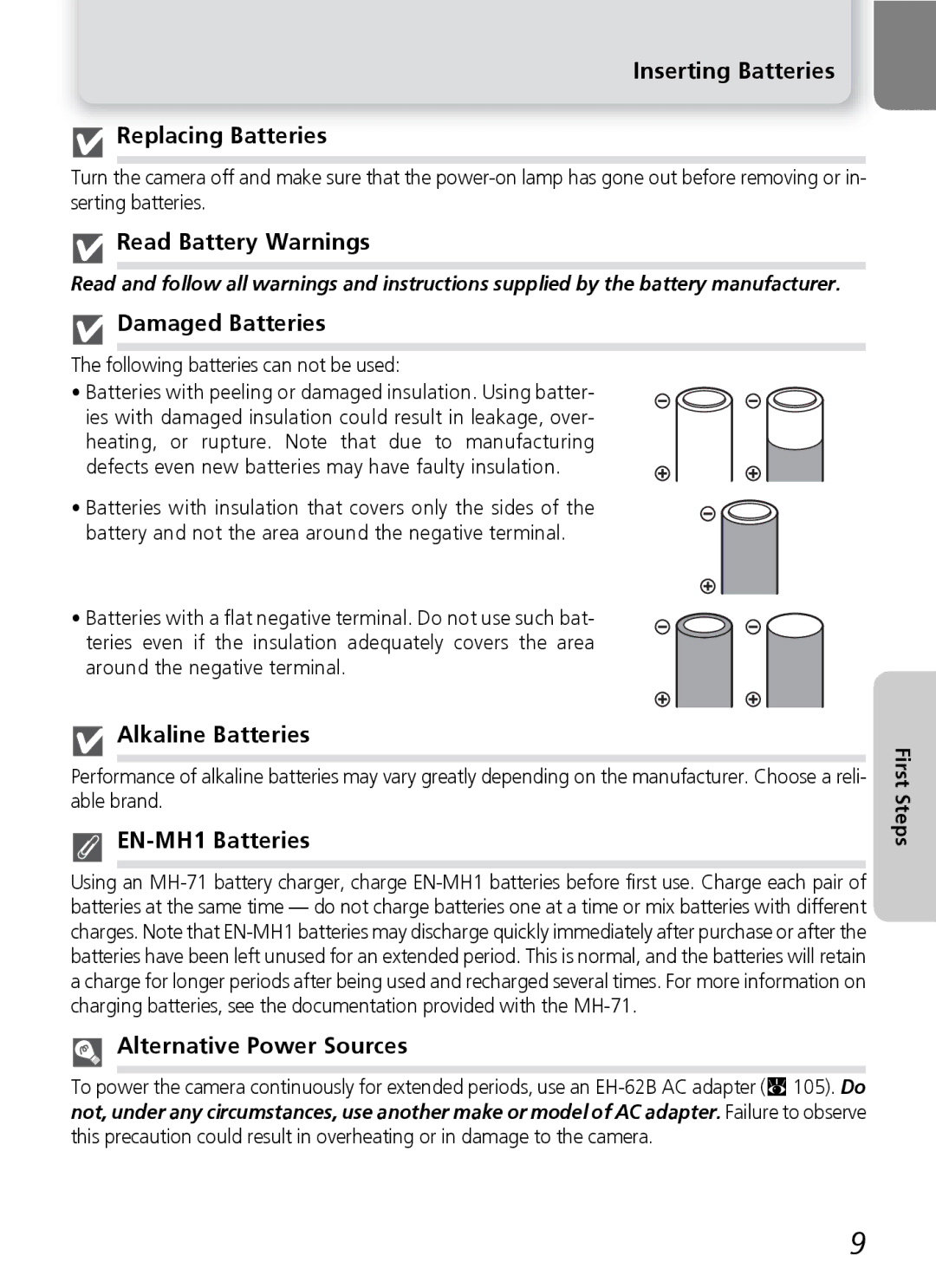
Inserting Batteries
 Replacing Batteries
Replacing Batteries
Turn the camera off and make sure that the
 Read Battery Warnings
Read Battery Warnings
Read and follow all warnings and instructions supplied by the battery manufacturer.
 Damaged Batteries
Damaged Batteries
The following batteries can not be used:
• Batteries with peeling or damaged insulation. Using batter- ies with damaged insulation could result in leakage, over- heating, or rupture. Note that due to manufacturing defects even new batteries may have faulty insulation.
• Batteries with insulation that covers only the sides of the battery and not the area around the negative terminal.
• Batteries with a flat negative terminal. Do not use such bat- teries even if the insulation adequately covers the area around the negative terminal.
 Alkaline Batteries
Alkaline Batteries
Performance of alkaline batteries may vary greatly depending on the manufacturer. Choose a reli- able brand.
EN-MH1 Batteries
Using an
Alternative Power Sources
To power the camera continuously for extended periods, use an
First Steps
9
